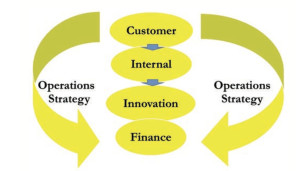Welcome to Marketing Basics
Welcome to Marketing Basics
It’s all about your customers and you.
It’s a new year and a fresh start. With that, I want to start with some basics. Basic marketing is the science of choosing markets through the use of market analysis and market segmentation. Marketing has evolved in the 21st century into a series of complex functions and activities that recognize everything matters to the customer and the customer has to be the primary focus of business. That would seem to be self-evident, but the evidence provides us with a different answer. Every aspect of marketing is driven by customer needs and wants. Through the past decade products have changed dramatically. There has been an almost manic introduction to technology in products from telephones to computers to everything. But I believe it is time to go back to basics.
Start with the Customer
The Harvard Business School and others introduced the “balanced scorecard” in the 1990s. This was in response to 90% of American businesses being less than successful at achieving their strategies. The primary reason was found to be a failure of employees to understand the strategy of their businesses. Communications is critical, isn’t it? There are four basic areas of study in the balanced scorecard:
- Customer
- Internal
- Innovation
- Finance
That’s the sequence I use to teach the theory. The normal approach is to start with finance and then move around. I say everything starts and ends with the customer, which is why I start with the needs and wants of the customer.
When you know the needs and wants of your customer base, then you know what you must do to excel. If you know what it is you have to excel in, then you also know what tools, technology, and training you need to provide to your workforce. From that you will make as much money as you want. Money, or profit, is the result of being in business. It is never the reason to be in business. Marketers want to find the needs and wants of customers so they can provide the customer service delivery systems that are required to attract and retain these customers. They will design a sustainable differential advantage for your business. However, at this time of year it is also good to review the results of your previous year. This leads us to producing two critical reports. The first I describe as a stratification report. The second is customer retention.
Stratification
This is quite simply a review of the percentage of your customers vs. the percentage of the business they provide for you. The old 80:20 rule is no longer applicable. We need to obtain a list of your customers in descending sales sequence. The largest customer will be at the head of the list and the smallest will be at the bottom. Get the total number of customers and divide the number by 20. That will give you 20 sectors of your business. Do the arithmetic and add up all the sales within each of those 20 segments and make a table out of the results. From this you will be able to see the percentage of business each 5% sector provides. Have a look at the results. The smaller the number of customers with a larger percentage of the business, the more vulnerable you are to customer defection.
Defection
At this time of year it is much easier to determine the number of customers who have defected from your business over the previous year. Depending on your business system, access the purchases by customer for each of the past two years and put the list in alphabetical order. Have the 2013 list on your left and the 2014 list on your right. Put a red felt pen in your left hand have a green felt pen in your right hand. Go through the list alphabetically. When you find a customer who purchased in 2013 and didn’t in 2014, put a red line through the name. When you find a customer who purchased in 2014 and didn’t buy in 2013, put a green line through the name in the list on the right hand side. At the end add up the reds and the greens.
Divide the reds by the total number of customers who bought in 2013 and that is the defection rate. Divide the greens by the total in the 2014 list and that is the acquisition rate. The Harvard Business School did definitive work on customer retention in the 1990s. In their book The Service Profit Chain, three Harvard professors expose the critical nature of the retention management measure. If you can increase your customer retention by 5% in the industrial distribution business, the profitability of the business will increase by 45%. Move from 80% retention to 85% retention and you will increase your business by nearly 50%! That is astonishing, isn’t it?
Let’s look at a table of customer retentions. If you start with 100 customers and your customer retention rate is 80%, that means you lose 20% each year. If you start with 100 customers and your retention rate is 85% (an improvement of 5%), you lose only 15% each year. This means over a five-year period you will retain 11 more customers for every 100 customers. The only thing missing is the lifetime value of your customers. With your knowledge of your business I hope you do this exercise and the calculation. What is the lifetime value of one of your customers? Once you have that value, then apply the table above with your details and you will see that the 45% improvement in your business profitability is extremely substantial. I don’t believe there is anything that will measure up to this improvement. So let’s welcome in 2015 making a new commitment to customer retention. You won’t regret it.
The time is now.
This article was originally published by Water Well Journal, waterwelljournal.com, January 2015.


